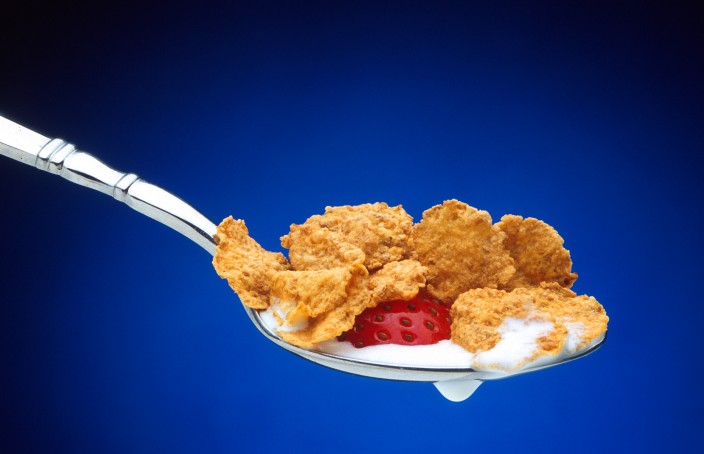Breakfast cereals contain a lot more sugar now than they did in 2012, according to the public health group Action on Sugar. The sugar content of some cereals has been compared – worryingly, and slightly bizarrely – to seven and a half chocolate fingers.
Of course, that comparison isn’t entirely valid – breakfast cereals contain a lot more nutritional benefits than chocolate fingers – but the figures do indicate a troubling lack of industry regulation. In 2012, Which? surveyed the sugar content of various cereals. Now Action on Sugar have followed it up, and the findings represent a real failure to address the obesity epidemic.
The worst offenders
- Aldi Harvest Morn Choco Rice: In 2012, it contained 33g of sugar per 100g. In 2015, that figure is now 39g per 100g. Or the equivalent of ten teaspoons. Since 2012, its sugar content has increased by 18 per cent.
- Kellogg’s Frosties: In 2012, Kellogg’s Frosties contained 37g of sugar per 100g, and it still does. It’s the equivalent of nine and a half teaspoons of sugar.
- Morrisons Honey & Nut Corn Flakes: From 33.6g of sugar in 2012, Morrisons Honey & Nut Corn Flakes now contain 36.3, an increase of eight per cent.
- Sainsbury’s Honey Nut Corn Flakes: the same.
- Kellogg’s Crunchy Nut: Kellogg’s Crunchy Nut contained 35g in 2012, and, like the Frosties, that figure hasn’t changed. It’s the equivalent of nine teaspoons of sugar per 100g.
How is this allowed to happen?
Graham MacGregor, Professor of Cardiovascular Medicine at Queen Mary University of London and Chairman of Action on Sugar, isn’t happy:
“Children quickly become used to the taste of high-sugar cereals and find healthier ones less palatable, which has long-term implications on their health. Eating too much sugar leads to weight gain, raising the risk of type 2 diabetes, heart disease and some cancers.
“One of the greatest failures in tackling Britain’s obesity epidemic is the government’s appeasement of the food industry; we cannot allow this to go on any longer. The so-called ‘Responsibility Deal’, which allows the food industry to regulate themselves (likened to ‘Dracula being put in control of the blood bank’), has clearly failed. It’s time for it to be scrapped.
Perhaps more worrying than the figures themselves are the number of cereals that are worse than they were three years ago, suggesting that the problem posed by obesity in the UK isn’t being taken as seriously as we’d like to think.
And yet there have been significant reductions in salt content for many of the same cereals – Lidl’s Crownfield Corn Flakes now contain 60 per cent less salt than they did in 2012. If food manufacturers can replicate these improvements on the sugar front, we’d all be a lot better off.
The least sugary breakfast cereals
But the cereal lovers amongst us will be hoping for alternatives. Surely there are less sugary options?
Here are the 10 least sugary breakfast cereals, perfect for people with diabetes:
- Nestle Shredded Wheat (just 0.7g of sugar per 100g)
- Quaker Oats Oatso Simple Original (1g)
- Weetabix (4.4g)
- Simple M&S Cornflakes (5.4g)
- Sainsbury’s Corn Flakes (7.2g)
- Aldi Harvest Morn Cornflakes (7.6g)
- Kellogg’s Cornflakes (8g)
- Tesco Corn Flakes (8.1g)
- Asda Cornflakes (8.1g)
- Morrisons Corn Flakes (8.4g)
What do you think? Should the companies be regulated in their sugar content? Or is it up to the consumer to make their own decisions about how much sugar they eat?





